Do you ever go to the nursery and see all those beautiful plants waiting for you to pick them and bring them home? Getting a new plant is the most exciting thing for plant lovers. However, beginners are usually afraid that the new plant will meet the same fate as all the plants they brought home. But your plants can also strive and become healthy if you will consider these 7 things before buying pots for indoor plants.
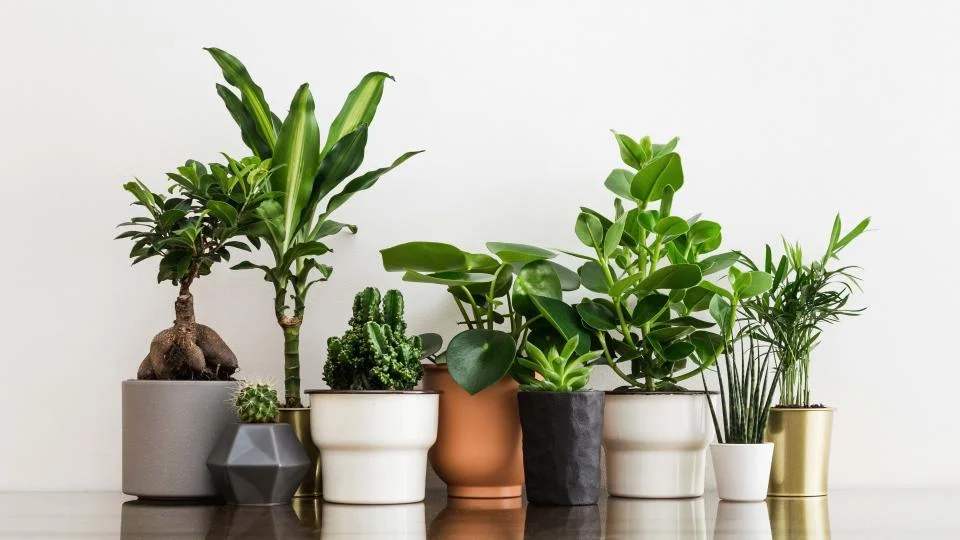
Nursery plants usually come in plastic containers. They can be inexpensive for pots, but not all plants do well in plastic pots. Moreover, they do not usually compliment the interior of your house. So before you rush to buy new containers, read this article. This article explains the essential factors you should consider before purchasing pots for or your indoor little green friends.
Factors for Buying Pots for Indoor Plants
Here is a list of 7 things you should consider while buying an indoor plant pot for your space:
1. Material of the pot
When buying pots for indoor plants, one must select the material that best suits the plant’s needs. Plant lovers like to pot their plants in beautiful, aesthetically pleasing pots. However, choosing a pot based on aesthetics is the most common mistake beginners make. The material of the pot plays a significant role in the plant’s growth. Therefore, selecting the right one makes a substantial difference between a thriving plant and a struggling one.

Depending upon the type of plant, different materials support the plant’s growth differently. There is a variety of pots made of diverse materials that are available in the market.
- Terracotta:
Terracotta pots have good porous value. Therefore, the soil dries more quickly as compared to other materials. Since overwatering is the main problem that affects the health of plants. Therefore, terracotta pots can be used for indoor plants that like dry soil. Cacti, succulents, snake plants, monstera, etc., are some common plants that can thrive well in terracotta pots.
However, these pots are not suitable for plants that like their soil to be wet. Indoor plants like ferns, spider plants, pothos, and lucky bamboo, like moist soil and terracotta pots, are not suitable for such plants.
- Plastic
Plastic pots are lightweight. Unlike clay pots, they do not break easily. They are gardener’s favorite due to their price. Plastic pots are generally reasonable and affordable. Plastic pots retain water, and the soil remains moist. Moisture-loving plants can grow beautifully in plastic containers. Spider plant, fern, lucky bamboo, rubber plant, golden palm, and areca palm are some plants that grow well in a plastic pot.
Since plastic is not a porous material and soil does not dry quickly. Therefore, plastic pots are not suitable for houseplants like succulents, ZZ plants, snake plants, ficus, and palms. Moreover, plastic can not tolerate high temperatures and become brittle in summer.
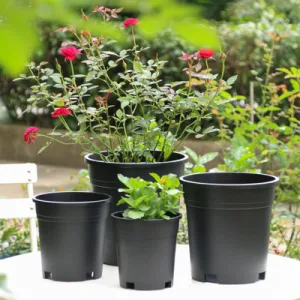
- Metal:
Metal as a pot material looks fancy in the house. Any metal container lying around your home can be used as a pot. By drilling holes at the bottom, the container can also have drainage.
However, metal heats up quickly, and the heat can damage plants’ roots. And this material does not have good draining abilities, and moisture can produce rust inside the pot. If you want to place a metal pot in your house, then it is advisable to pot your plant in a cheap plastic pot and then put it in the metal pot. This way, you can ensure good care for your plant while making it look elegant.
- Ceramic:
Unlike terracotta pots, ceramic pots are glazed on the inside and outside. Therefore, they are less porous and denser. Ceramics is a perfect material for plants that like moist soil. These pots do not drain the water quickly, and the soil can absorb the fertilizer and other nutrients easily. However, decorative ceramic pots usually do not have drainage holes, and you must drill them.
2. Height and Size of the Pot
It is always recommended to buy a pot that is generally one size larger than the plant. Typically, 1-2 inches bigger than the plant. Some plants can stay in the same pots for years, while others need to change their pot’s size according to the plant growth.
The size of your indoor plant pot should depend on how big your plant will get. If you plan to have a small-sized indoor plant pot, then go with a smaller pot that can hold around 5-6 inches of soil. However, if you want a bigger pot, go with pots that can have 10-12 inches of soil.
Gardener’s Tip: For small plants, pot should be 1-2 inch bigger
For bigger plants, pot should be 4 inch bigger
The weight of the pots depends on the plant’s needs. Here is the rule: buy a pot that is one size bigger in the diameter of the total root mass of the plant. But, if you have chosen a plant that grows very quickly. In this case, you will need to buy a 4-inch bigger pot than the size of the plant.
3. Drainage
Drainage is one of the most important factors when buying pots for indoor plants. Good drainage provides circulation space and oxygen to the plant’s roots. Moreover, a proper hole in the bottom of the pot allows water in the soil to drain quickly. The number of draining holes at the bottom of the plants is dependent on the material of your pot. For terracotta and ceramic pots, a single hole will do the job, but for plastic pots, 4-5 holes will be sufficient for proper water drainage.
Due to poor drainage, the soil remains wet most of the time. It results in plant roots not getting enough oxygen, resulting in root rot. Root rot, if not identified, can cause the death of the plant. However, there are many ways to improve the drainage of pots by adding soil amendments like perlite, pumice, coarse sand, peat moss, etc.
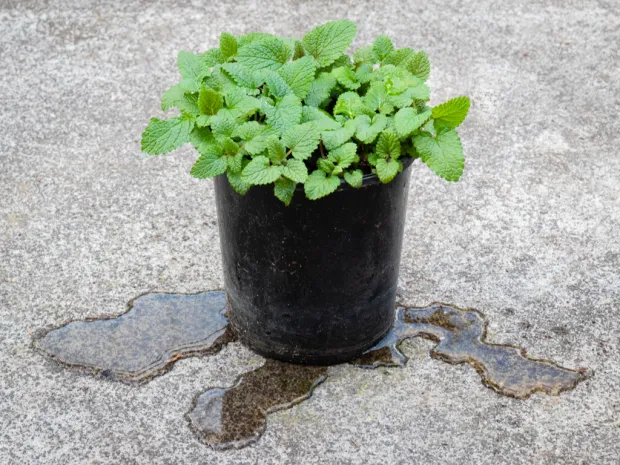
4. Porosity
Do the pot need to be porous for indoor plants? We recommend going for porous pots without any doubt. Porous pots tend to dry more evenly than other pots. If the water drains from the pot quickly, you can add more water to the plant, but watering the already moist soil can result in root rot. Moreover, porous containers allow moisture and air to move through them.
Terracotta is the best option for pots as they are highly porous and drain quickly. Whereas glazed ceramics and plastic pots are significantly less porous and less draining.
5. Durability
If you want a long-lasting pot, you need to look for a durable material. The excellent durability of the plant pot means it will use fewer resources. In contrast, the cheaper ones are good if you need them for special plant projects. Less durable pots are comparably more affordable than durable ones.
Terracotta and ceramics pots are easily breakable. Whereas plastic metal and concrete planters are very durable. However, plastic and metal containers cannot withstand high temperatures affecting their durability. Whereas terracotta, ceramics, and concrete planters can tolerate harsh temperatures.
6. Aesthetics
A wide variety of decorative pots are available that will complement your house’s interior. Different colors, designs, and styles in the pots can add beauty to the place. You can get all kinds of pretty planters from boho to chic, traditional to modern.
Choose the color of the pot that will go well with the plant. Avoid buying heavily painted and dark-colored planters if your plant is already dark in color. Alternatively, if your plant is small-leaved, do not buy a pot with a leaf pattern with a solid light color background.
However, it is not necessary that the aesthetically attractive planter will be good for plant health. So we recommend you buy the decorative planter and place your plant in a regular pot inside it. Make sure to purchase the decorative container 1-2 inches bigger than the plant so you can take the pot out easily for watering.
7. Maintenance
Pots used indoors must be regularly maintained to keep them looking their best. This means dusting them off, wiping them down with a damp cloth, and occasionally giving them a thorough cleaning. It’s also important to check the drainage holes to ensure they’re not blocked. If they are, the water will build up and could eventually damage the pot. Buy pots that are easy to clean and have the proper drain cleaning.
Moreover, different materials need an extra level of maintenance. Terracotta pots are low maintenance, but they can get a white mold that must be treated. On the other hand, wooden planters are high maintenance and need waterproofing; otherwise, too much moisture can lead to rot.
Conclusion:
Once you have considered all of these factors, you will be able to decide what type of pot is the right one for your plant. If you like this article, visit our website for more articles on plants and planters.
FAQ
1. Are drainage holes necessary in planters?
Drainage holes are of utmost importance for the growth of plants. If water does not drain properly from the holes, the moist soil and over-watering can result in root rot.
2. Can we pot succulents in cute pots?
The best kind of pots for succulents are terracotta and ceramics. However, succulents do not like too much water so make sure whatever pot you select drains the water fast.
3. How often can we change the pot of a plant?
If you feel the plant is overgrowing the size of its pot, it is time to change the pot. Make sure to select the pot size carefully. Because plants do not like repotting often as it can stress out the plant leading to browning of the leaves.



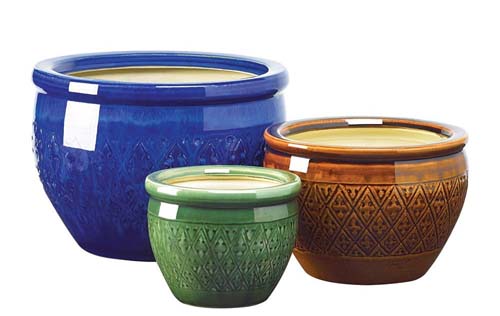


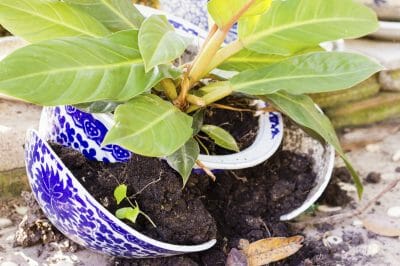
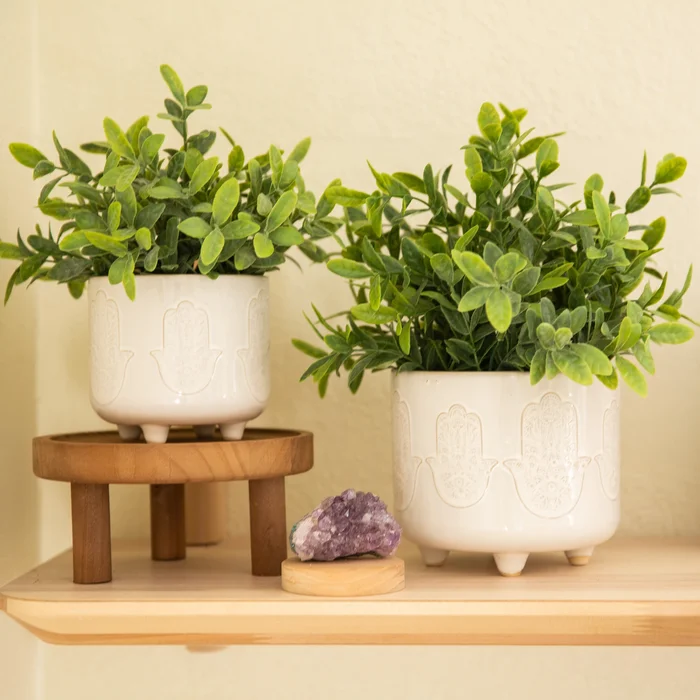

1 Comment
What is the Best Material of Pots for Indoor Plants? - Planter Galleria
June 16, 2022[…] selecting pots for indoor plants, it is important to consider the material of the pots. Choosing attractive pots without considering […]